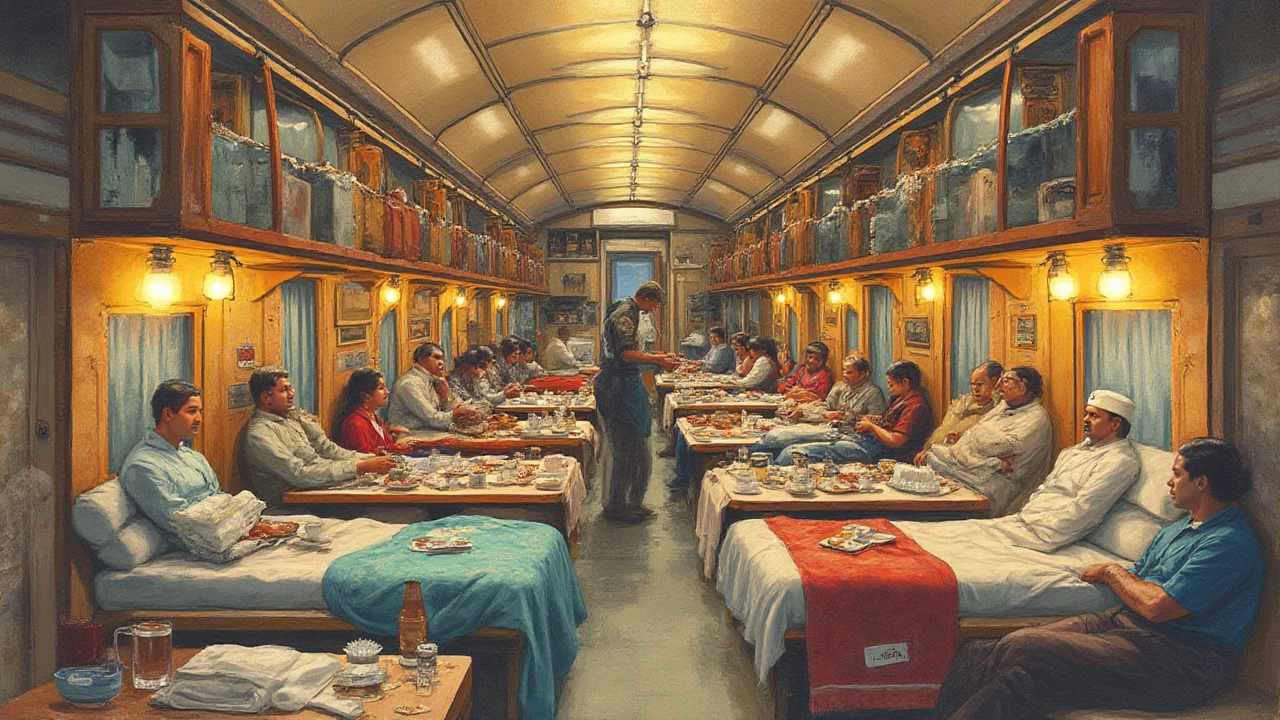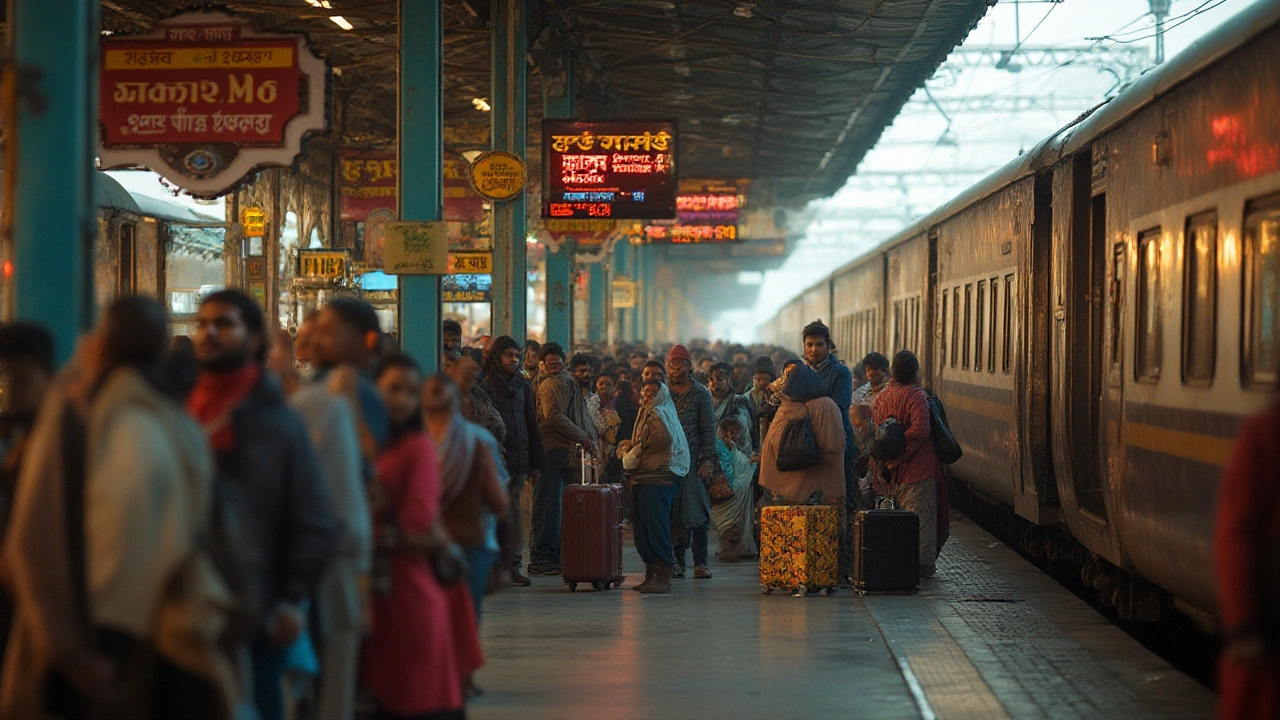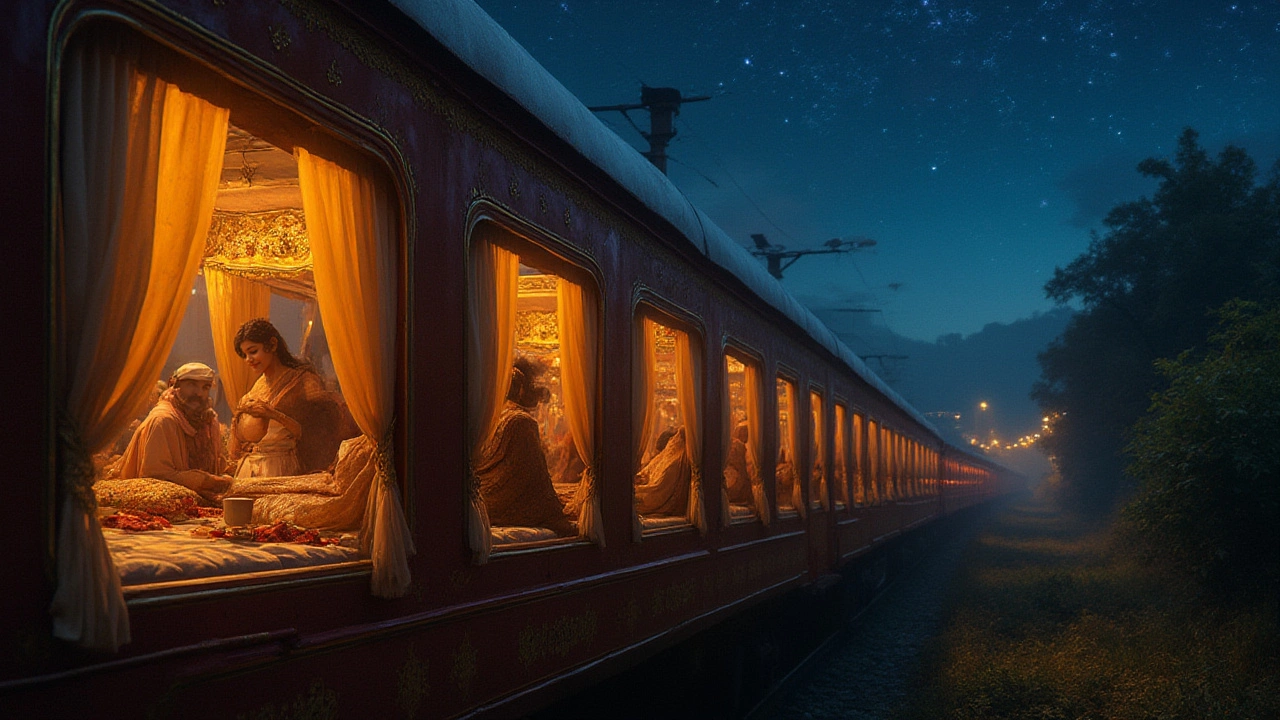Ever checked the price of a sleeper train and thought, “I could fly, stay in a decent hotel, AND have a fancy dinner for less?” You’re not alone. It feels odd, doesn't it? Jump on a night train in Europe or India, and the bill doesn’t just pay for wheels on rails or a bed that rocks you to sleep. There's a whole network of costs and quirky economics at play. Growing up in Wellington, over here we dream of train journeys like the Orient Express while our own rail network sits quietly. But from the wild tales of travelers crashing out with mountain views to my friend who backpacked Italy’s sleeper cars on a shoestring, I know first-hand how strange train ticket pricing can seem. So why does it cost so much more to sleep your way through the countryside instead of just taking a day train? Let’s unpick the puzzle.
The Magic (and Math) of Sleeper Trains
Picture the classic sleeper train: plush compartments, softly clacking rails, maybe even a velvet curtain or a bottle of wine tucked in a corner. That’s no accident. Creating the magic of overnight travel comes with big price tags long before passengers climb aboard. Unlike a normal day train that fits people like sardines, sleeper trains have to use up precious space for beds, not seats. This drops the passenger count per carriage to about a third compared to daytime service. Try fitting seventeen beds and a lounge into what fits sixty basic seats! That means less ticket income for every meter of train.
What’s more, all those extra comforts—real beds, private cabins, nice bathrooms, sometimes even showers—aren’t just there for looks. They need to be cleaned, maintained, and replaced regularly. Luxury and heritage trains like India’s Maharajas' Express and Europe’s Caledonian Sleeper sink big money into refurbishments and swanky amenities. Even modest sleeper lines, like Austria’s ÖBB Nightjet, have to manage bedding, towels, and food service. Each pillow costs money—trust me, just ask the folks who run European sleeper services. The moment a sleeper train leaves the station, costs rack up in a way that makes a basic day train look cheap.
Add in train staff who need to be on shift all through the night: conductors, cleaning crews, chefs, and even security. Workers earn more for overnight work, and unions lobby hard to keep pay fair. That payroll becomes another baked-in cost that you’ll find reflected in your ticket. Think about airlines: sure, long-haul flights have more staff and food, but planes turn over quickly, squeezing in more customers. Even swanky sleeper trains can’t pack in extra trips or passengers per night.
Rail Network Fees and Fierce Competition
What may surprise you is that sleeper train operators aren’t freely gliding through the night-air, either. They have to pay steep fees for the right to use the rails after dark. These track-access charges soar at prime nighttime hours. According to the International Union of Railways, it can cost up to €10,000 per night to run just one sleeper journey across borders in Western Europe. That piles onto basic expenses like fuel, wear-and-tear maintenance, and even parking trains at city centers during the daytime. Compare that to buses which pay much less to use public roads.
Competition squeezes sleeper trains from all sides. Low-cost airlines scoop up price-hunting travelers, making them question the point of slow, overnight journeys. Fast day trains promise greater timetables and cheap deals if you book early. Budget hotels, hostels, and Airbnb options cover the rest. What’s left is a niche: people who choose the romantic or practical option of snoozing while they travel. And with fewer travelers, operators must raise prices to cover those fixed costs.
Every time a new budget airline expands, the pressure on sleeper prices gets even stronger. In the past, countries heavily subsidized night trains. But government money dries up quickly, and most policies now favor speedy day travel. Operators like Indian Railways do their best to keep sleeper fares low for locals, but the margins grow razor-thin. Whenever a company like ÖBB or Belmond launches new lines—maybe even a posh Delhi to Mumbai overnight trip—they know they’re catering to a small, devoted audience who are willing to pay more for the unique experience.

Why Not Cheaper? Hidden Expenses That Don’t Disappear
Take a sleeper’s ticket price apart, and it’s clear where each dollar goes. It’s not just “the train” you’re paying for, but a rolling hotel room, cleaners, round-the-clock staff, and extras like breakfast or coffee. And yet, the math doesn’t tip in the passenger’s favor. Even on crowded routes in China and Russia with government backing, margins on sleeper trains barely cover the bills. That’s partly because a lot goes wrong behind the scenes: flooding in rail yards, big storms knocking out timetables, or passengers cancelling at the last minute—all cost money.
Then there’s maintenance. Sleeper carriages can't be swapped out for the regular rolling stock; beds, curtains, even locks must be certified for overnight use (thanks to safety rules and picky insurance companies). Refitting old carriages to become luxury sleepers costs an absolute fortune. When European company Midnight Trains announced their launch in 2024, they spent over €80 million just remodeling retro cars to meet safety standards—the kind of bill that doesn’t get covered by 100 tickets sold. No wonder companies need to set prices high just to keep the wheels turning.
Flexibility hurts, too. If a luxury sleeper is only half-booked, there’s no way to fill empty beds at the last minute (not like a hostel does). Many lines offer private compartments, so some couch beds sit empty while one couple gets privacy. All that lost space is rolled into each paying traveler’s fare. Trains also pay high energy costs, especially those running in cold European winters or roasting Indian summers—heating, aircon, and hot water add up quickly. Hidden fees, like taxes and overnight station operating costs, are often included in the final sticker shock.
Experience, Romance, and What You Actually Get
Here’s something most people forget: sleeper trains aren’t just transport from A to B. They’re an experience—sometimes the whole point of a trip. No wonder companies play up “old world charm” and exclusive perks. From the legendary Venice Simplon-Orient-Express with its tuxedoed waiters and all-inclusive gourmet dining to Japan’s Seven Stars luxury train where each suite has a private butler, the upsell is always about adventure and nostalgia.
That romance gets rolled into the ticket price, for better or worse. It’s a different crowd: honeymooners, train buffs, families seeking an adventure for their kids. But this comes at a premium. When folks compare sleeper train prices to budget airlines, they forget to add in the cost of hotels, meals, and the gift of waking up at a new city’s doorstep ready to explore. Legendary traveler and writer Paul Theroux put it well:
"Travel by train is almost the definition of slow travel: it’s about taking in the journey as much as the destination."
Still, while you’re soaking up scenery from a comfy cabin or making friends in the dining car, every square meter, every scrambled egg at breakfast, comes at a cost. Those who splurge on the Venice Simplon-Orient-Express aren’t paying for speed—they want the story, the decor, and the cocktail before bed. It’s not just about getting somewhere; it’s about how you get there. For many, that’s priceless—if you can afford it.

How to Snag a Better Deal (and Make the Most of Sleeper Trains)
But maybe you’re thinking: “Fine, I get why it’s expensive, but is there any way to save a chunk of cash?” Good news—if you know what to look for, sleeper train tickets can sometimes be scored for much less. Here are some tips:
- Book early—really early. Most sleeper services open up booking windows months ahead. Prices tend to be cheapest right when tickets are released.
- Skip the fancier classes. Economy or shared couchette compartments cost much less. Sure, you might share with strangers, but you’ll still wake up at your destination (and maybe meet a few interesting characters).
- Hunt for passes. Eurail and Interrail pass holders can score discounts or special sleeper deals, especially off-season.
- Travel on less popular nights—midweek rides see cheaper fares and less crowding.
- Watch for sales. Lines like India’s Rajdhani Express and Austria’s Nightjet sometimes offer discounts when launching new routes or during holiday promotions.
- Bring your own snacks or meals—sometimes catering is a big upcharge.
- If your main goal is just to get good sleep and scenery without the luxury, look for government-backed routes in India, China, or Russia, where subsidies keep prices low for locals.
And don’t forget essentials for comfort: an eye mask, earplugs, and maybe a cheeky nightcap from the dining car. Don’t be afraid to ask the attendant for extra blankets, either—most are more than happy to oblige. If you’re a pet lover like me, plan ahead; some lines welcome dogs and even the occasional cockatoo (just check policies first, or you might find yourself negotiating with a guard at 2am, trust me).
Sometimes, the real value lies not in the cost per mile, but in the way the journey sticks with you. Sure, the price might sting—and that credit card statement will remind you for a while. But there’s a good reason folks save up for that special night on the rails—it’s a story you’ll tell long after you’ve arrived home, and sometimes, that’s worth every penny.
